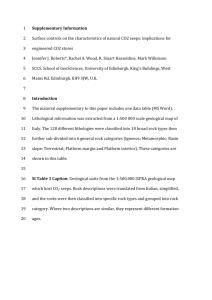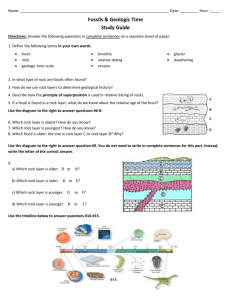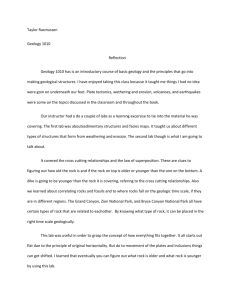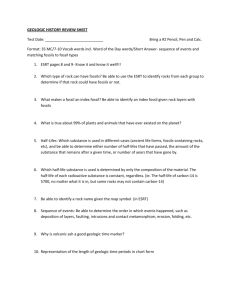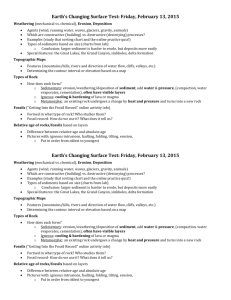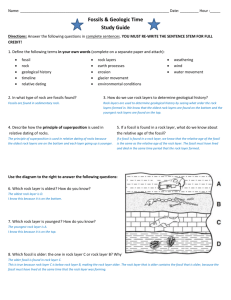Fossils & Geologic Time Study Guide
advertisement
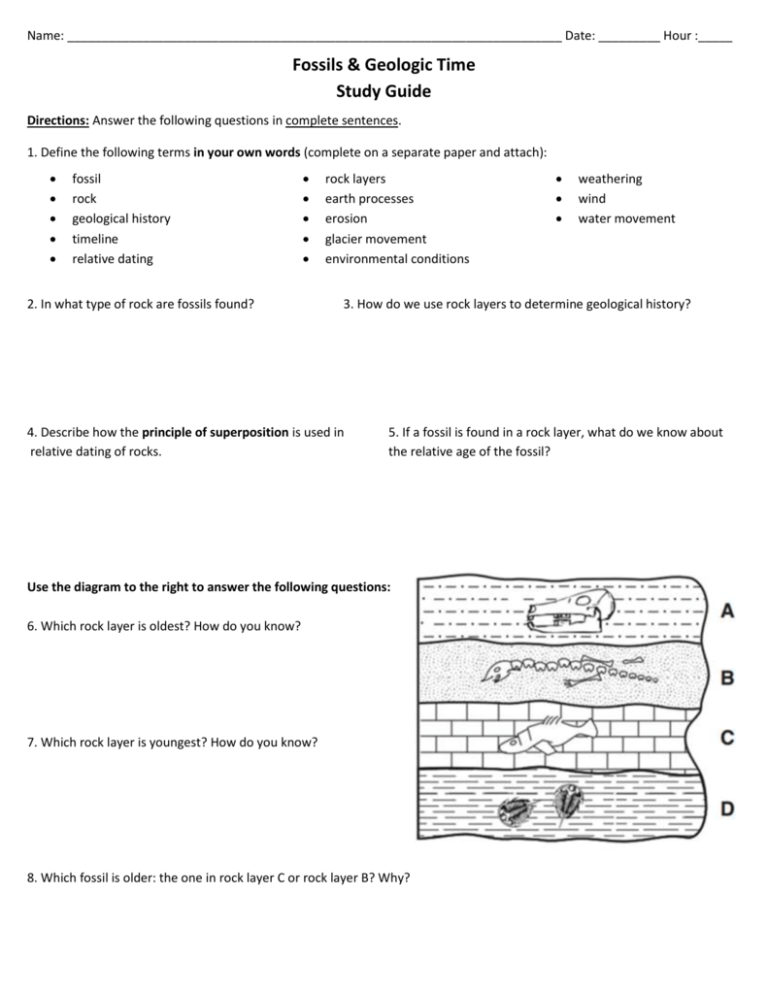
Name: ________________________________________________________________________ Date: _________ Hour :_____ Fossils & Geologic Time Study Guide Directions: Answer the following questions in complete sentences. 1. Define the following terms in your own words (complete on a separate paper and attach): fossil rock geological history timeline relative dating 2. In what type of rock are fossils found? rock layers earth processes erosion glacier movement environmental conditions weathering wind water movement 3. How do we use rock layers to determine geological history? 4. Describe how the principle of superposition is used in relative dating of rocks. 5. If a fossil is found in a rock layer, what do we know about the relative age of the fossil? Use the diagram to the right to answer the following questions: 6. Which rock layer is oldest? How do you know? 7. Which rock layer is youngest? How do you know? 8. Which fossil is older: the one in rock layer C or rock layer B? Why? Use the diagram to the right to answer the following questions. You do not need to write in complete sentences for this part. Instead, write the letter of the correct answer. 9. a) Which rock layer is older: D or B? b) Which rock layer is older: B or E? c) Which rock layer is younger: D or F? d) Which rock layer is younger: D or C? Use the timeline below to answer the following questions. BYA 10. How many billions of years ago did Earth form? 11. What happened approximately 2.6 bya? 12. Which occurred first: the rise in atmospheric oxygen or the moon formation? 13. Approximately how long ago did hard-shelled animals appear? 14. Which occurred first: the core formation or Jack Hills Zircon? 15. What event occurred most recently? 16. What 3 things do fossils provide ? (Hint: see your notes) 17. What is the fossil record? 18. How do geologists use the fossil record to determine geological history? Use the fossil record to the right to answer the following questions: 19. During what period did reptile diversity occur? 20. What occurred during the Silurian period? 21. During what period did the first amphibians appear? 22. What occurred during the Jurassic period? 23. Give an example of erosion. 24. How can erosion expose rock layers? 25. Describe the process of mountain building. 26. Can mountain building change the shape of Earth’s surface? 27. Explain what happens to mountains when they go through erosion. 28. How are rocks used to measure geologic time? 29. What is a glacier? ` 30. How can glacier movement change the surface of Earth? CONSTRUCTED RESPONSE: Why do geologists need to understand the processes of erosion, mountain building, and glacier movement in order to properly use rocks to determine geological history? Explain how geologists use rocks to determine geological history (1 point) Describe erosion OR mountain building OR glacier movement (1 point) Explain why a knowledge of the process you chose (erosion, mountain building, or glacier movement) is needed to use rocks to determine geological history (1 point)
